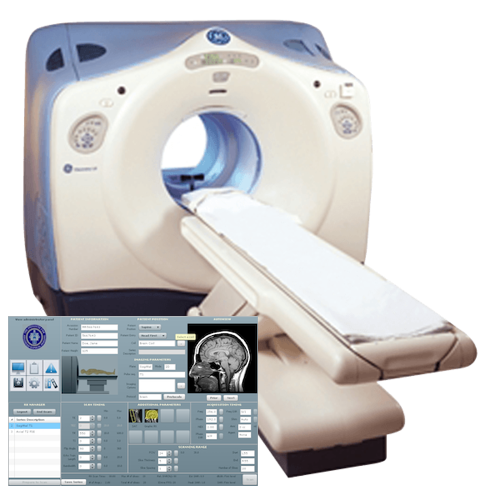|
Iodine is a trace mineral that is vital to the function of the thyroid gland. The human body does not make iodine, so all iodine intake must come from either our diet or from supplements.
Sulfur is called nature's "beauty mineral" because it keeps skin smooth and youthful and hair glossy. Sulfur is necessary for the production of collagen and keratin, proteins necessary for the health and maintenance of skin, nails and hair'
$14.95
|
|
 Dr. D. Kutsco, MD, Consultant Surgical Oncologist & CMD Surgery for Cervical Cancer Many women with cervical cancer will have some type of surgery. Surgery can be used to:
Several types of ‘surgery’ can be used to help treat cervical cancer, although some of these destroy cervical tissue (with cold or with a laser) rather than removing it. CryosurgeryA very cold metal probe is placed directly on the cervix. This kills the abnormal cells by freezing them. This can be done in a doctor’s office or clinic. After cryosurgery, you may have a lot of watery brown discharge for a few weeks. Laser surgeryA focused laser beam, directed through the vagina, is used to vaporize (burn off) abnormal cells or to remove a small piece of tissue for study. This can be done in a doctor’s office or clinic and is done under local anesthesia (numbing medicine). ConizationA cone-shaped piece of tissue is removed from the cervix. This is done using a surgical or laser knife (cold knife cone biopsy) or using a thin wire heated by electricity (the loop electrosurgical, LEEP or LEETZ procedure). (See How are cervical cancers and pre-cancers diagnosed? for more information.) After the procedure, the removed tissue is examined with a microscope. If the margins (outer edges) of the tissue contain cancer (or pre-cancer) cells (called positive margins), some cancer (or pre-cancer) may have been left behind, so further treatment is needed. Simple (total) hysterectomyThis surgery removes the uterus (both the body of the uterus and the cervix) but not the structures next to the uterus (parametria and uterosacral ligaments). The vagina and pelvic lymph nodes are not removed. The ovaries and fallopian tubes are usually left in place unless there is another reason to remove them. There are different ways to do a hysterectomy:
General or epidural (regional) anesthesia is used for all of these operations. For a laparoscopic or vaginal hysterectomy, the hospital stay is usually 1 to 2 days, followed by a 2- to 3-week recovery period. A hospital stay of 3 to 5 days is common for an abdominal hysterectomy, and complete recovery takes about 4 to 6 weeks. Possible side effects: Any type of hysterectomy results in infertility (inability to have children). Complications are unusual but could include excessive bleeding, wound infection, or damage to the urinary or intestinal systems. Hysterectomy does not change a woman's ability to feel sexual pleasure. A woman does not need a uterus or cervix to reach orgasm. The area around the clitoris and the lining of the vagina remain as sensitive as before a hysterectomy. More information about managing the sexual side effects of cervical cancer treatment can be found in Sex and the Woman with Cancer. Radical hysterectomyFor this operation, the surgeon removes the uterus along with the tissues next to the uterus (the parametria and the uterosacral ligaments) and the upper part (about 1 inch) of the vagina next to the cervix. The ovaries and fallopian tubes are not removed unless there is some other medical reason to do so. More tissue is removed in a radical hysterectomy than in a simple one, so the hospital stay can be longer. This surgery is usually done through alarge abdominal incision (also known as open surgery). Often, some pelvic lymph nodes are removed as well. (This procedure, known as lymph nodedissection, is discussed later in this section.) A radical hysterectomy can also be done using laparoscopy (keyhole surgery). (See the ‘Simple hysterectomy’ section for a description of laparoscopy.)
Laparoscopic surgery can result in less pain, less blood loss during the operation, and a shorter hospital stay compared to open surgery. However, recent research has found that women with early stage cervical cancer who have open surgery tend to have a lower chance of the cancer coming back (recurring), as well as a better chance of living longer, than women who have laparoscopic surgery. Laparoscopic surgery may still be an option for a small specific group of women with early stage cancer, but you should discuss your options carefully with your doctor. Possible side effects: Because the uterus is removed, this surgery results in infertility. Because some of the nerves to the bladder are removed, some women have problems emptying their bladder after this operation and may need a catheter for a time. Complications are unusual but could include excessive bleeding, wound infection, or damage to the urinary and intestinal systems. Radical hysterectomy does not change a woman's ability to feel sexual pleasure. Although the vagina is shortened, the area around the clitoris and the lining of the vagina is as sensitive as before. A woman does not need a uterus or cervix to reach orgasm. When cancer has caused pain or bleeding with intercourse, the hysterectomy may actually improve a woman's sex life by stopping these symptoms. More information about managing the sexual side effects of cervical cancer treatment can be found in Sex and the Woman with Cancer. TrachelectomyAnother procedure, known as a radical trachelectomy, allows women to be treated without losing their ability to have children. The operation is done either through the vagina or the abdomen, and is sometimes done using laparoscopy (keyhole surgery). This procedure removes the cervix and the upper part of the vagina but not the body of the uterus. The surgeon then places a "purse-string" stitch to act as an artificial opening of the cervix inside the uterine cavity.


The nearby lymph nodes are also removed using laparoscopy which may require another incision (cut). The operation is done either through the vagina or the abdomen. After trachelectomy, some women are able to carry a pregnancy to term and deliver a healthy baby by cesarean section, although women who have had this surgery may have a higher risk of miscarriage. Pelvic exenterationThis is a more extensive operation that may be used to treat recurrent cervical cancer. In this surgery, all of the same organs and tissues are removed as in a radical hysterectomy with pelvic lymph node dissection. (Lymph node dissection is discussed in the next section.) In addition, the bladder, vagina, rectum, and part of the colon may also be removed, depending on where the cancer has spread. If your bladder is removed, you will need a new way to store and eliminate urine. This usually means using a short segment of intestine to function as a new bladder. The new bladder may be connected to the abdominal wall so that urine is drained periodically when the patient places a catheter into a urostomy (a small opening). Or urine may drain continuously into a small plastic bag attached to the front of the abdomen. For more information, see Urostomy: A Guide. If the rectum and part of the colon are removed, a new way to eliminate solid waste must be created. This is done by attaching the remaining intestine to the abdominal wall so that fecal material can pass through a colostomy (a small opening) into a small plastic bag worn on the front of the abdomen (more information about colostomies can be found in Colostomy: A Guide). In some cases, it may be possible to remove the cancerous part of the colon (next to the cervix) and reconnect the colon ends so that no bags or external appliances are needed. If the vagina is removed, a new vagina can be surgically created out of skin, intestinal tissue, or muscle and skin (myocutaneous) grafts. Sexual impact of pelvic exenteration Recovery from total pelvic exenteration takes a long time. Most women don't begin to feel like themselves again for about 6 months after surgery. Some say it takes a year or two to adjust completely. Nevertheless, these women can lead happy and productive lives. With practice and determination, they can also have sexual desire, pleasure, and orgasms. More information about managing the sexual side effects of cervical cancer treatment can be found in Sex and the Woman with Cancer. Pelvic lymph node dissectionCancer that starts in the cervix can spread to lymph nodes (pea-sized collections of immune system tissue) in the pelvis To check for lymph node spread, the surgeon might remove some of these lymph nodes. This procedure is known as a lymph node dissection or lymph node sampling. It is done at the same time as a hysterectomy or trachelectomy. Removing lymph nodes can lead to fluid drainage problems in the leg. This can cause severe swelling in the leg, a condition called lymphedema. More information can be found in our section on Lymphedema. Para-aortic lymph node samplingIf cancer is found in any pelvic lymph nodes during surgery, some of the lymph nodes along the aorta (the large artery in the abdomen) may be removed as well. This is called para-aortic lymph node sampling. Any tissue removed at surgery will be tested to see if the cancer has spread further than expected. If so, radiation therapy with or without chemotherapy may be recommended. If surgery is not done, another way to check for lymph node spread is with an imaging test(like MRI or PET/CT). Lymph nodes that are bigger than usual and/or light up on PET scan are more likely to have cancer, so they might need to be biopsied. |
|
|

OPEN 24 HOURS: ACCIDENT EMERGENCY, LAB SERVICES, IMAGING SERVICES & PHARMACY










